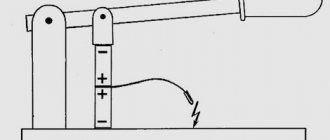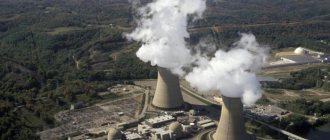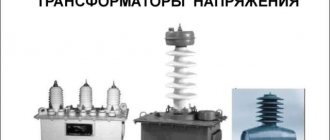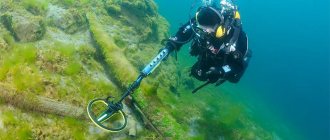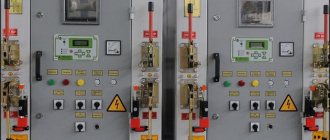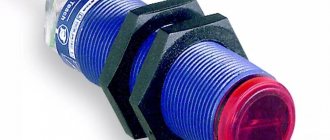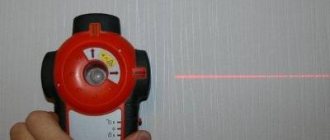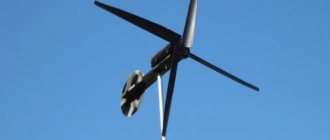The gradual disappearance of fossil fuel sources is forcing scientists to come up with other ways to obtain energy. Despite the fact that wind energy began to be used more than 5,000 years ago, wind farms did not gain popularity there long ago. Everyone knows how people use the wind today - wind power plants, air mills, hang gliding and much more.
Wind energy is a growing industry that specializes in the study and use of wind energy in everyday life. It is considered one of the most promising sectors of alternative energy production.
Every year the construction of wind farms increases, more and more countries are investing in the development and research of wind energy applications. Perhaps in the near future, alternative environmentally friendly sources will fully provide people with energy.
Operating principle of a wind power plant
Wind power plants are several wind turbines interconnected into a single network. Large stations may include more than 100 wind generators. Such places are called “wind parks”. Wind turbines are an environmentally friendly way to produce energy indefinitely.
Effective places for installing wind power plants are areas with a constant flow of wind - hilly areas, mountains, coastal areas of seas and oceans. The following types are distinguished by location:
- ground;
- coastal;
- floating;
- offshore.
By type of construction we can distinguish:
- rotary;
- winged.
Vane wind power plants are the most efficient and are widely used. They are capable of producing sufficient amounts of energy. A three-blade mechanism with a horizontal axis of rotation is most often installed on a high mast. The rotation power depends on the size of the blades. The maximum rotation speed is achieved at the moment when the wind flow is perpendicular to the blades. Since wind flows periodically change direction, there is an automatic control unit
Rotary power plants have a vertical axis of rotation. The advantage of this type is that they do not emit noise, the efficiency of operation does not depend on the direction of the wind flow, so the station does not require additional control units. But compared to impeller power plants, they are less efficient.
The operating principle of any wind power plant is the same. The wind flow spins a rotor with blades that are connected to a generator. The larger the blades, the more flow they capture and rotate at a higher speed. The faster the blades spin, the more energy is generated. The generator converts movement into energy and outputs it to batteries. The output is usable energy.
Wind machines at the service of man
The desire to master the production of wind power machines has led to the birth of many such units. Some of them reach tens of meters in height, and it is believed that over time they could form a real electrical network.
Small wind turbines are designed to supply electricity to individual houses.
Wind power stations, mainly DC, are being built. The wind wheel drives a dynamo, an electric current generator that simultaneously charges batteries connected in parallel.
The battery is automatically connected to the generator at the moment when the voltage at its output terminals becomes greater than that at the battery terminals, and is also automatically disconnected when the ratio is opposite.
Wind power plants came into use on a small scale several decades ago. Nowadays, a wide variety of prototypes of wind-electric generators (more precisely, wind engines with electric generators) have been created. Some of them look like a regular children's spinner, others look like a bicycle wheel with aluminum blades instead of spokes. There are units in the form of a carousel or in the form of a mast with a system of circular wind catchers suspended one above the other, with a horizontal or vertical axis of rotation, with two or fifty blades.
When planning a wind turbine, special attention should be paid to the angles of rotation of the blade, which determines the supply of wind to the generator. The angle of inclination of the blades in relation to the wind is adjusted by rotating them around the longitudinal axis: in strong winds, this angle is sharper, the air flow flows more freely around the blades and gives them less of its energy.
In addition to adjusting the blades, the entire generator automatically rotates on the mast against the wind.
The design of bladed wind turbines with a rotor circuit ensures maximum rotation speed at startup and its automatic self-regulation during operation. As the load increases, the rotation speed of the wind wheel decreases and the torque increases.
The height of the mast is essential for wind power plants. Already at a height of 9 m, the wind speed is, as a rule, 15-25% higher than at 1.5 m from the ground, and even a small increase in the average wind force allows you to get much more electricity from the station.
According to scientists, existing methods of converting wind energy into electricity using traditional bladed wind power plants (WPPs) are not yet economically justified. Firstly, due to the high starting wind speed (4-5 m/sec), high nominal speed (8-15 m/sec) and low annual productivity in conditions of weak continental winds - 3-5 m/sec; secondly, the cost of wind turbines is $1000-$1500 per kW of installed capacity. Therefore, the future of wind power plants depends primarily on the costs of their construction.
Global wind distribution
To correctly calculate the installation location of a wind power plant, many factors must be taken into account. Regions with high potential are considered to be places where the average wind speed is about 9 m/s. Such places include Latin America, Greenland, western and northern parts of Europe, central Asia, and central North America.
Assessing wind resources is a complex process. Main factors to pay attention to:
- what winds prevail;
- relief and altitude of the area;
- the presence of reservoirs, vegetation, and various buildings.
Most of the land is not suitable for the location of such stations. The starting speed for generating electricity is 4 m/s. The optimal speed is about 10 m/s.
How does the sea or ocean affect the amount of current produced from a wind generator?
For efficient operation of a windmill, not only the strength of the wind is important, but also its constant flow. We all know that wind is the flow of air at the surface of the earth. These flows are formed due to the movement of air from an area of lower pressure to a higher one. Since the earth heats up faster than the surface of the water, the location of wind turbines near seas and oceans creates suitable wind generation - wind currents are always formed here. In addition to the usual ones, there are also storm winds that reach speeds of 20 m/s.
Conducted research confirms that by building wind parks in the seas and oceans, the energy generated by wind turbines could provide all the needs of humanity. In addition, wind speed in the ocean is approximately 70% greater than on land. Although the idea is interesting, its implementation is complex and requires large investments.
Network connection diagram
It is advisable to connect such systems when the power of the wind turbine is high or the power of consumers is quite low. Such a connection allows not only to power electricity receivers from the public grid, but also, in case of excess energy production from a wind power plant (solar power plant or combinations thereof), to sell electricity at the so-called “feed-in tariff”.
Types of wind generators
Wind generators are devices that convert kinetic energy created by wind flow into mechanical, and then into electrical.
All wind generators can be divided into vertical and horizontal. They take their name from the location of the axis of rotation:
Vertical or “carousel” wind turbines
This type of windmill has a mechanism with a vertical axis of rotation. Represents:
- the main rotor, which receives the air flow;
- gearbox;
- generator;
- accumulator battery;
- inverter
Such windmills are silent and can be installed near a residential building; their operation does not depend on the direction of the wind - they are able to capture air flow from any angle, work begins with the minimum wind flow strength.
Horizontal
The rotor axis rotates parallel to the ground. Wind generators of this type have only one blade. They are divided into single-blade, two-blade, three-blade and multi-blade. For the operation of horizontal wind generators, the correct direction of the wind is necessary, so automatic adjustment is thought out.
The advantage of such installations is greater operating efficiency. Compared to vertical ones, they are lighter and smaller in size.
Design and principle of operation
Any wind generator consists of several standard enlarged blocks. The unit necessarily contains a turbine, which rotates under the influence of the air flow, directly or most often through a step-up gearbox, transmits the generated torque to the shaft of the electric generator. The rotor rotates inside a stator based on neodymium magnets, resulting in the generation of electrical energy.
The design of a small power wind generator is shown in Figure 1.
Rice. 1. Design of a homemade wind generator
The electrical energy generated by the wind generator goes to an intermediate storage device, the functions of which are usually taken over by a battery. The current supplied by the battery powers the inverter, from the output of which normal 220-volt alternating voltage of household frequency is removed.
The presence of a battery is mandatory, because it allows you to smooth out fluctuations in the power removed from the turbine. A role in this is played by the fact that a household wind generator operates stably at wind speeds of 6 m/s and above, while the average annual value of this parameter in most of Russia is approximately one and a half times lower.
The necessary switching, adjustments and other functions are implemented by the automation unit.
An appropriate level of operational reliability is achieved if the design has reserves for output power (usually 10 - 20%).
How does a wind power plant work?
Modern wind farms have 3 blades, the length of which can reach 55 meters.
To understand how the station works you need to know how it works:
- Wind generator. Its main task is to convert energy into electricity. Consists of a propeller and an alternator.
- Controller. Converts alternating current to direct current and regulates the speed of the wind generator.
- Batteries store energy while the windmill is running.
- An inverter converts direct current into household current, which is supplied to the house for use.
Features of household wind generators
Since wind energy is an inexhaustible resource, many people are thinking about installing a wind turbine at home. Previously, wind generators were used more in the industrial sector. But with the development of this technology, household models also appeared.
Most often they are used in places where there is no centralized power grid. Modern installations with 3-5 generators can fully provide the house with energy. However, before buying windmills, it is worth studying how efficiently they will work in a particular area.
Note! On the market you can find a wind-diesel power plant (WDP), which is a combination of wind-electric installations and a diesel generator. In addition to electricity, the VDES can also produce heat, which allows uninterrupted supply of energy to the house.
Rechargeable batteries
As they are often also referred to as batteries or batteries, they accumulate the electricity generated by a wind generator. Their main task is to store energy between its production and consumption. If the battery capacity is small, it will quickly charge and subsequent energy generation will be pointless, since there will be nowhere to store it. When powering consumers from such a battery, the opposite situation will arise - it will discharge too quickly, and therefore will not allow it to power the load for a long time. Therefore, you should choose high-capacity batteries to eliminate the above disadvantages. If you buy batteries with a huge capacity, they will never be charged to their full capacity. Also, the capacity of the batteries affects their cost and dimensions. When storing electrical energy for a long time, batteries self-discharge, which also needs to be taken into account. Therefore, to correctly select these devices, you need to analyze all the options in order to select the most optimal option for your system, depending on the requirements that you set for your system.
Battery capacity
The capacity must be such that when operating a solar or wind power plant at maximum charging power (or consumption) of electricity, the charge - discharge of the battery must be at least 10 hours (which is a prerequisite for AGM, acid, slot, gel and lead batteries). As an example, if the power of a wind turbine is 5 kW, then the battery capacity should be at least 50 kW-hours.
Capacity of industrial stations
Wind energy as an industry relies on the use of powerful industrial wind turbines that can provide energy on a large scale. All wind generators have a similar design:
- support tower or mast;
- gondola
- turbine generator.
The dimensions of such stations can reach a height of up to 190 meters and weigh up to 6000 tons. One of the largest units in the world, Enercon E-126, has a blade span of 128 meters.
Calculation of a bladed wind generator
The power of the device can be calculated using the following formula:
P=0.6·(¶r2)v3 where,
P – design power, kW;
r – distance from the central point of the rotor to the end of the blade, m;
v – average speed, m/s;
¶=3,14.
Of great importance in design is the size of the blade, shape, and material from which it is made.
Multiplier calculation
The most powerful rotor can produce about 400 revolutions per minute, but for effective operation, the number of revolutions must be 2.5 times higher. For this purpose, multipliers are installed - intermediate links between the rotor and the generator, which increases the shaft speed. To ensure efficient operation of the generator, you need a multiplier with a large increase factor.
Mast
The mast is one of the most important design elements of a wind generator. The height of the mast depends on the installation location. Basic installation rules:
- The wind generator mast should be located no closer than 150 meters from plantings and residential buildings, and preferably at a distance of 2.5 kilometers.
- The lower edge of the blade should be no lower than 10 meters from the top of the trees.
In order for wind generators to operate at full capacity, the minimum installation height starts at 25 meters. Most often the mast height is 70-110 meters
Based on the type of support there are:
- on stretch marks;
- conical;
- welded;
- hydraulic.
The mast is installed on a foundation on which the reliability of the structure depends. To begin with, dig a pit and lay crushed stone and sand in layers. After compaction, the base of the mast is installed and filled with concrete. After pouring, the foundation needs time to settle for 4-5 weeks. Only after this the work on installing the mast continues.
Vertical wind generators have a different design. They do not require high supports, and the mast is a collapsible structure up to 6 meters high, which is mounted on the roof of buildings.
Wind energy calculation
Wind energy is the kinetic energy of air flow. This indicator is measured in joules. It can be calculated using the following formula:
P = r · V3 · S/2, where r is the air density indicator (1.225 kg/m3), V is the value reflecting the speed at which the flow moves (m/s), S is the flow area (m2).
When calculating, it is important to take into account the losses and efficiency of the generator.
To get accurate results, you need to know the terrain indicators. Where is the wind generator supposed to be installed?
Wind power plants
Wind power plants
Definitions
| Wind power plant (WPP) is an installation that uses the kinetic energy of the wind, which, with the help of a wind wheel , is converted into mechanical energy of rotation of the generator shaft and then into electrical energy (Fig. 4.1). We will call a wind wheel both a wind turbine and a wind engine. The gondola is the head part of the wind turbine. Wind farms, wind power plants (WPPs) are many wind turbines grouped in one territory to operate on one power grid. | Rice. 4.1. Wind turbine design [56] |
General characteristics
Share of wind turbines in the energy sector
In Russia:
— as of 2009, the total power of wind turbines was 17-18 MW [53], the power of wind turbines in the annexed Crimea was 59 MW [53];
— share in total electricity production in Russia – less than 0.1% (2010) [20].
In the world:
— total capacity – 432 GW (beginning of 2016) [53];
— the share of wind energy in global electricity production is 3% (2014) [53].
In countries:
— in China 75,324 MW (end of 2012, world leader) [54];
— in Denmark: 42% of all generated electricity (2015) [53].
Purpose of the wind turbine
4.3.1. DC wind turbine [35]
1) Wind-charging wind turbines.
Purpose
: battery charge.
Features: DC wind turbines can have several batteries (when one battery powers the load, the other is charged); usually gearless (high-speed wind wheels).
2) Wind turbines with guaranteed power supply, operating in parallel with the battery.
Purpose
: power supply to consumers and battery charge; for the system as a whole - guaranteed supply of electricity to consumers
Features: depending on changes in wind speeds and external load, automatic control systems transfer the wind turbine and the system as a whole to one of the following modes:
— a wind turbine (VA) powers an external load without a battery;
— VA charges the battery without external load;
— VA charges the battery and simultaneously powers the external load;
— VA and AB operate in parallel to an external load;
— AB powers external load without VA.
3) Wind turbines with non-guaranteed power supply (without battery).
Purpose
: Power supply to low-power consumers in areas with stable winds and in extreme conditions.
Features: in all cases, installations of this type must have VK speed control systems [1]; power from several tens to several hundred watts; the power of the external load is regulated - it should not exceed the rated power of the wind-charging wind turbine [1]; operate without a battery together with a control unit that provides a stable output voltage; gearless (the wind wheel is installed directly on the generator shaft).
4.3.2. AC wind turbine [35]
1) Autonomous wind turbines.
Purpose
: power supply to consumers not connected to the electrical network.
Features: low power (0.1÷1 kW); low installed capacity utilization factor [35]; The system includes a battery.
Features of the structural part of the wind turbine
Types of wind turbines
| A) | 1) With a horizontal axis of rotation Currently, 95% of all wind turbines produced in the world are three-bladed with a horizontal axis (Fig. 4.3, a ) [15]. Below, when it is not specifically mentioned, we will talk about the horizontal axis of rotation directed along the direction of the wind. |
| b) c) d)
| 2) With a vertical axis of rotation (carousel) (Fig. 4.3, b ). The blades of such turbines move parallel to the ground. There are different types of mechanisms with a vertical axis of rotation: - orthogonal design (Fig. 4.3, c); - Darrieus mechanism (Fig. 4.3, d); -Savonius mechanism (Fig. 4.3, d); - design on a multi-blade rotor with a guide vane (Fig. 4.3, e); -generator with a helicoidal design (Fig. 4.3, g); [7] Properties: The movement of the blades is not affected by the direction of the wind. The turbine axis is designed so that all its equipment can be installed at a short distance from the ground and the manufacturer does not need to build a high tower. Vertical wind turbines are much less efficient than horizontal ones (half of the blade's operation occurs opposite to the direction of the wind). To install a vertical wind turbine, you will need much more space than a horizontal generator. Conclusion: a horizontal wind generator will be beneficial for industrial use, as it is more efficient. A vertical wind generator will be good for use in households where high efficiency is not required and putting it into operation does not require large expenses. f) g) |
Blades
Number of blades
: from 1 to 50 (or more) [22].
In single-blade wind wheels, a counterweight is used to balance the blade. The components of a single-blade windmill (bearing, gearbox, electric machine) experience an asymmetrical load at each revolution. Increasing the number of blades, along with increasing power, gives a comparative softening of the work [24].
The number of blades determines the speed of rotation of the wind wheel (Section 4.9.1) and the torque on the shaft (Section 4.10). Power is practically independent of the number of blades (Section 4.6.3).
The greater the number of blades, the greater the windage of the structure, the more complex the mechanism for turning the blades (Section 4.15.1), and removing them from the storm (Section 4.6.2).
Recommendation [24]: rational number of blades in a wind turbine with diameter D
VK up to 60 meters – 3 blades, with
D
VK over 60 meters – 2 blades.
Dimensions
: the diameter of the circle outlined by the ends of the blades (
the diameter of the propeller
) for powerful wind turbines (1 MW) can exceed 50 meters [4].
Record blade span – 150 meters ( Haliade 150
) (Section 4.22.2).
Blade weight
: can exceed 1000 kg [4]
Material
: the blades must be light and at the same time strong enough. They are made of wood, steel, fiberglass [22], fiberglass and carbon fiber [12].
Fiberglass is a material consisting of glass filler (fiber) and a synthetic polymer binder. Fiberglass is characterized by a combination of high strength and relatively low thermal conductivity. This material does not deform and is resistant to chemicals, air and water.
Tower (mast) height
In relation to the wind
, the higher the height of the mast, the:
— vegetation and buildings weaken wind speed to a lesser extent;
The blades must rise above surrounding obstacles within a radius of 100 m by at least 10 m. It is believed that 15 m is the minimum possible installation height [4].
— the effect of braking of the underlying layers of air flow on the overlying ones is manifested to a lesser extent (the manifestation of this effect sharply decreases at altitudes of more than 100 meters) [50];
In some areas, wind strength increases by 20% and, accordingly, energy benefits by 34% for every 10 meters increase [17].
The larger the blades, the higher the tower should be [4].
For large wind turbines, the tower height is 80÷120 meters [12]. Record height – 198 meters (with wind turbine power – 6 MW) [12]
The maximum height of the tower is limited by the tensile strength of the materials used in the tower structure [4].
The complexity of the tower design (especially with high power wind turbines) requires its competent design. If the tower's foundation is incorrectly designed, or the foundation's drainage is not properly arranged, the tower may fall from a strong gust of wind.
Generator location
a) At the top of the mast, in the nacelle of a wind turbine (which, in large wind turbines, has the size of a two-story house) [12].
b) Below. In this case, the system uses a vertical transmission
and lower transmission mechanism [10].
c) According to the principle of an airship (exotic).
As part of a demonstration run, Altaeros Energies deployed a wind turbine called BAT (buoyant airborne turbine) at an altitude of 300 meters, which is 83 meters higher than the world's tallest wind turbine, Vestas V164-8.0 MW. The wind generator has an outer shell filled with helium, which makes it possible to easily raise it to high altitudes, where the wind speed is constant and high. This technology is borrowed from airships, which have been used by mankind for a long time. The installation is secured to the ground using strong cables. In 2013, Altaeros Energies already successfully tested wind generators at an altitude of 150 meters at a wind speed of 20 m/s [57].
4.5. The process of energy conversion in wind turbines
What do we have at the wind wheel input?
Wind kinetic energy:
W
k=
mv
2/2, (4.1)
where m –
mass of air used by the wind wheel,
v
– speed of air movement.
Mass of air passing through area S
VK, covered by blades:
m
=ρ
V
=ρ
vS
vk (4.2)
Area covered by the blades ( S
Вк=0.25π
D
2, where
D is
the diameter described by the ends of the blades), also called
swept area
.
Substituting (4.2) into (4.1), we obtain an expression for the kinetic energy of the wind, which we try to use every second during the operation of the wind turbine (wind power, in other words):
W
k=ρ
v
3
S
vk /2 (4.3)
Only part of this energy ( W
c) it is possible to convert the shaft rotation energy into mechanical energy using a wind wheel.
The degree of energy use is characterized by the wind energy utilization coefficient
:
k
is=
W
in/
W
to (4.4)
The output power of the wind turbine (that is, the output power of the generator) can be calculated taking into account the generator efficiency ηg:
R
out = ρ
v
3
S
in
k
isηg/2 (4.5)
Wind speed
Wind speed significantly affects the amount of electricity generated by wind turbines.
95% of all Russian wind
lies in the speed range from 4 to 12 m/s (at lower speeds the power is negligible, higher speeds are rare) [16].
It is rational to use wind turbines in areas where the average annual wind speed is at least 3.5 m/s [15].
The operating range of wind speeds for wind turbines is from 3 [4] to 25 m/s [15]. Small wind turbines can operate at wind speeds less than 3 m/sec [4].
Most wind turbines reach their rated power at a wind speed of about 7-10 m/s [15]. For Russia, the speed at which a household windmill must be designed to obtain maximum power can be taken as 5 m/s [16].
High wind speeds can lead to the destruction of wind turbines. When the wind speed is higher than permissible, the wind wheel stops using a system for automatically moving the blades to the feathering position
[15].
The highest wind speed above the earth's surface was recorded on March 8, 1972 at the US Air Force base in Thule (Greenland) - 92.5 m/s (44 m above sea level). During the Moscow hurricane of 1998, wind speed reached 26 m/s.
4.6.3. Area S
VK, covered by the blades, and the number of blades
The mechanical power of the wind wheel (and the electrical power of the wind generator, all other things being equal) is proportional to the area S
VK, covered by the blades, that is,
the square of the diameter D
VK, described by the ends of the blades.
On the other side:
1) An increase in the size of the wind wheel blades leads to an increase in mechanical loads on the structural elements, which increases the cost of the wind turbine [4].
2) According to estimates of one of the Soviet wind turbine designers V.P. Vetchinkin, proportional to the cube of diameter D
VK increases the cost of wind turbines [16].
The number of blades has virtually no effect on the power on the wind wheel shaft (and, consequently, on the output power of the wind turbine) [10].
4.6.4. Wind power utilization factor k
IS and angle of attack
Wind power utilization factor k
IS has no relation to the efficiency of
the wind generator
ηg.
The wind energy utilization coefficient characterizes the ratio of the mechanical energy removed from the wind wheel to the kinetic energy of the wind captured by this wind wheel:
k
is =
W
in /
W
to
Let us highlight two factors that determine the value of the wind energy utilization coefficient:
a) type of wind turbine;
b) angle of attack.
Wind turbine type
Vane wind wheel: 0.593 (maximum possible value); 0.49÷0.52 [15]; 0.45-0.48 [25]; 0.43 [16] (maximum values achieved in practice).
Carousel and drum type wind wheel: 0.192 (maximum possible value) [25]; 0.15-0.18 [10] (maximum values achieved in practice).
The maximum possible coefficient of utilization of wind energy for an ideal wind wheel was calculated by Nikolai Egorovich Zhukovsky (article “NEZH type windmill. Article three”, 1920).
How did this number come about? The windmill receives 2/3 of the oncoming flow located in the area swept by the wind wheel (1/3 is deflected); in an ideal case, the speed of the outgoing flow is 1/3 of the speed of the incoming flow (i.e., 1/9 of the energy is carried away with the outgoing flow): 2/3*8/9=0.593 [24].
Wind turbine power
Wind turbine power level
According to GOST R 51990-2002, depending on power, wind turbines are divided into four groups:
— high power — over 1 MW;
The most powerful wind turbine in existence has a capacity of 7.58 MW (Section 4.21.2).
— average power — from 100 kW to 1 MW;
— low power — from 5 to 99 kW;
- very low power - less than 5 kW.
Trend
: increase in unit power of wind turbines.
A 6 MW wind generator is more profitable than two 3 MW generators. Savings are achieved, in particular, on installation and maintenance [44].
The maximum power level of the wind turbine is limited
the following factors:
— the maximum possible dimensions of the blades, which, in turn, are limited by mechanical strength and the cost of ensuring it;
The size of the blades is one of the main factors determining the power of a wind turbine at a fixed wind.
- transportation and installation costs.
American experts believe that with a power greater than 3.6 MW, the costs of transportation and installation will be excessively high and will not justify the savings on enlarging the unit [34].
Wind generator efficiency
The efficiency of a wind generator depends on power and a number of other factors. In the given examples of low-power wind generators (Section 4.20), the efficiency value ranges from 74 to 95%.
4.9. Wind wheel rotation speed n
VC
The rotation frequency of the wind wheel (at a fixed wind speed) will be lower than:
— greater number of blades (they interfere with each other) [4], [5];
— greater width of the blades [5];
— the greater the angle of rotation of the blades relative to the plane of rotation [5].
Speed of the wind wheel
One of the characteristics of wind generators is the speed of the wind wheel Z -
the ratio of the peripheral speed of the outer end of the blade to the design wind speed.
,
where w
– angular speed of rotation of the wind wheel (rad/s),
R
– radius of the blade.
For modern wind wheels this figure ranges from 4 to 12 [15].
In foreign literature, speed is usually denoted by the letter λ [24].
| The coefficient of use of wind energy k (Fig. 4.6). At high speeds, the influence of friction becomes greater. The greatest power is achieved by increasing the aerodynamic quality of the K profile [24]. Aerodynamic quality is the ratio of lift to drag at a given angle of attack. |
|
Moment on the wind wheel shaft
Expression for moment
In Section 4.6.3 it was said that the power at the wind wheel shaft P
practically does not depend on the number of blades.
In Section 4.9.1 it was stated that the speed n
VVS decreases with an increase in the number of blades.
The moment can be expressed from the formula for wind wheel power:
R
VK=
M
ΩVK, (4.7)
where Ω= π n
VK/30 – angular speed of the wind wheel.
M
=30
R
VK/(π
n
VK) (4.8)
Analysis of formula (4.8) shows that multi-bladed low-speed wind turbines have another important quality - a large torque M
. This property is used to directly drive mechanisms, such as water pumps to lift water [5].
It is the torque on the shaft that determines the mass and dimensions of the generator, and also, in many ways, the mass and size of the shaft
and other structural elements, for example, nacelles and masts [16].
Starting moment
The starting moment (starting moment) is the moment on the shaft that must be imparted to the wind wheel in order for it to move from its initial stationary state.
Multi-bladed low-speed wind wheels have a large starting moment [24].
Small-bladed high-speed wind wheels have a low starting moment [24].
The quality of starting can be improved by a forced blade rotation system [24].
Generator speed
Voltage
Constant (for low powers from 100 W to 1...3 kW) and/or variable [7].
Small wind turbines (with a power of 0.1...1 kW, powered by a battery) - constant voltage from 14 to 28 V, which can subsequently be inverted into 220 V AC [4].
Alternating voltage 230 V, 50 Hz [5].
In the case of electricity consumers with voltages with different parameters, an extensive power supply system with secondary power sources, which are electricity converters, is used.
Large wind turbines operating on the power grid mainly generate electricity with a voltage of 690 V. The transformer increases the voltage even higher - up to 10-30 kV [4].
Generator types
Wind turbines use three-phase alternating current generators.
— classic synchronous generators with an OB on the rotor (the OB is powered in self-excitation mode);
— synchronous generators with an exciter and a rotating rectifier (in wind turbines with a power of more than 15 kW);
— inductor generators with a fixed excitation winding;
— synchronous generators with excitation from permanent magnets;
— asynchronous generators (the main generator of wind turbines until 2000 [23]);
— synchronized asynchronous generators (SAG) (Section 13.3).
Example: Growian wind turbine with a capacity of 3 MW in Germany [31].
All these generators are also used in other electrical power installations, so the features, advantages and disadvantages of various types of generators will be discussed in a separate section (Section 13).
Voltage frequency stabilization options
As a rule, the output voltage of wind turbines is subject to frequency stability requirements.
Note
that not all consumers are critical to frequency changes: for example, lighting fixtures, electric heating elements, motor load (when a stable rotation speed is not required). In certain areas of application (agricultural installations), such consumers account for 90% of the total power [5].
1) Stabilization of the generator rotation speed, and therefore the generator voltage frequency: f
g=60
n
g/
p
.
Speed n
ceteris paribus, depends on the wind speed and the moment of resistance on the wind wheel. The moment of resistance on the wind wheel depends on the load of the generator.
a) Impact on the wind wheel, for example, by changing the angle of rotation of the working blades αl (angle of attack) (pitch control) [23].
To change the angle of attack, hydraulic and mechanical blade rotation systems are used, which significantly complicate installation.
Suppose
, that the load power of the generator has changed, i.e. the power (torque) of the turbine resistance has changed. By changing αl, it is possible to equalize the moments - the moment developed by the turbine and the moment of resistance. Equality of moments, according to the equation of motion:
M
–
М
с=
cJdn
/
dt
(4.10)
will not lead to a change in rotation speed.
Due to the lower air density, the possibilities of such control are significantly less than in the case of hydraulic turbines [5].
Another disadvantage of this method of regulation is its large inertia [5].
Note
that such wind wheels must be equipped with special bearings, which often cause unit failures.
It would be more accurate to say that this method is aimed at regulating the power on the generator shaft. At wind speed v
<
v
p (
v
p is selected about 1.7 from the average wind speed, but not more than 13...14 m/s) the control system does not come into effect, and the wind turbine operates with variable power.
When v
>
v
p, the power is maintained almost constant using the control system [10].
b) Using a gearbox with a variable gear ratio i
(SPG system - Super Position Gear):
n
g(const)
= i
(var)
· n
vk (var).
SPG is a mechanical system (planetary differential) that uses hydraulic components and completely replaces expensive power electronics. Often works in combination with method 1, and
[32].
This method was first successfully tested at the experimental wind farm LS1 (Great Britain, Orkney Islands, 1987). The same principle is used at a 2 MW wind farm by the Czech company Wilkov Wind [32].
c) Generator load regulation. Along with the payload, ballast load is used. This prevents overspeeding. Higher performance [5].
Ballast load is a useless load (resistance), which, if necessary, is connected to the output terminals of the generator, thereby changing its current, and as a consequence, the moment on its shaft, which is the moment of resistance for the wind wheel.
For example, when the battery is fully charged, the regulator “cuts off” the charge to prevent the battery from overcharging, while at the same time maintaining a load on the alternator to prevent acceleration.
It should be noted
that keeping the wind wheel at a constant speed reduces its efficiency [23].
2) Stabilization of voltage frequency at changing rotation speed (use of electrical frequency converters).
a) Frequency converter with a DC link (“rectifier” - “inverter”) (more common).
b) Direct frequency converter (DFC) (cycloconverters).
c) The use of synchronized asynchronous generators with a frequency converter in the rotor circuit.
Electricity transmission
The issue of energy transmission for wind turbines becomes a problem if they are located on the sea coast (sometimes tens of kilometers from the coast). In this case, undersea cables are required to transmit the generated electricity.
Two options:
a) Transmit three-phase alternating current energy.
Advantage: no additional power converters are required.
Disadvantage: increased losses (submarine cables have capacitance); The issue of synchronizing the received energy with the network is more difficult to resolve.
b) Transmit high voltage direct current electricity.
Advantage: less wastage.
Disadvantage: additional converters of electricity from the generated alternating current to direct current (high power) will be required.
Over short distances, energy is transmitted directly from wind turbines in the form of three-phase alternating current. However, at a distance of already 80 km, energy losses become too great [46].
Example
.
The German company TenneT TSO plans to build in the North Sea, at a distance of 60 to 160 km from the coast, several offshore
wind farms, up to hundreds of wind turbines each, and a corresponding number of converters located on offshore offshore platforms. The largest platform under construction (SylWin alpha) is 82 m long, 56 m wide and 80 m high and is designed to convert 864 MW [46].
4.17. Particular quality indicators (comparison criteria) of wind turbines [15]:
— safety of wind generator operation;
— wind utilization factor;
— annual amount of energy generated per year at a given average annual wind speed;
— the ratio of the cost of a wind generator to the annual electricity generation;
— required frequency of service;
— operational reliability, characterized, in particular, by the warranty period.
Advantages of wind turbines
1) The costs associated with the operation of wind turbines (maintenance, repairs, spare parts) are lower than those of a diesel generator set (DGS). There is no need to provide fuel, and wind as a source of energy costs nothing [4].
It should be noted that, compared to diesel generator sets, the initial cost of wind turbines is higher, and this is a disadvantage of wind turbines [4].
2) When using wind energy, there are no harmful emissions into the atmosphere (as in thermal power plants), there is no hazardous radioactive waste (as in nuclear power plants) [4].
A wind turbine with a capacity of 1 MW over 20 years allows replacing approximately 29 thousand tons of coal with a corresponding reduction in emissions of carbon dioxide and other substances into the atmosphere [26].
3) The cost of 1 kW of installed power is much lower than that of solar power plants and is comparable to microhydroelectric power plants.
4) Wind resources, compared to solar ones, are distributed fairly evenly throughout the year and throughout the day.
5) Autonomy of wind turbines.
Compared to micro-hydroelectric power plants, wind turbines can be located close to the power supply facility, while the location of micro-hydro power plants is tied to the river.
6) Compared to FEP, the production of wind turbines does not require high-tech equipment.
Disadvantages of wind turbines
1) Instability of wind speed.
This leads to significant changes in the power of the wind turbine and, as a consequence, the impossibility of reliable power supply to the nominal composition of consumers without the use of other sources of electricity.
Exit and necessity
: use of storage devices and backup power sources.
For every thousand “wind” megawatts, you need to have an average of 400 MW of reserve power in reserve, capable of quickly turning on in a calm and just as quickly disappearing with a tailwind. For “conventional” energy, the standard reserve of maneuverable power is four times less [19].
2) Low air density.
Water has a density 800 times greater - about 1000 kg/m3. Low density does not allow you to take more power from the wind (when we talk about the power of wind turbines, you will be able to compare it with the power of hydroelectric power plants). To obtain even relatively high power, large wind wheels are required (hundreds of times larger than a hydraulic turbine wheel of the same power) [7].
3) Low degree of land use at wind farms.
Large wind farms consist of several rows of wind turbines located perpendicular to the wind flow.
Target:
eliminate the negative impact of neighboring wind turbines that are part of the wind farm on each other due to the turbulence they create.
Requirements to achieve the goal
.
Adjacent wind turbines should be installed at a distance of 5÷15 rotor diameters from each other [4]. The distance between supports in a row is 4 rotor diameters, and between rows is 10 rotor diameters. On average, for every 1 MW of wind farm capacity there should be an area of 20 hectares [34].
Megawatt machines should be separated by a distance of one and a half kilometers [4].
Consequence
. Only 1% of the land occupied by wind farms is actually used for the installation of towers. The territory between wind turbines cannot be used either for the construction of buildings or for forestry [4].
4) wind turbines, unlike solar cells, contain moving elements; the reliability of each mechanism is limited and depends on the professionalism of its developers and manufacturers [4].
Large wind turbines experience significant problems with repairs, since replacing a large part (blade, rotor, etc.) at an altitude of more than 100 meters is a complex and expensive undertaking [50].
5) High noise level (from blades and mechanical transmission).
For a wind turbine with a power of 850 kW, the noise level at the level of the wind wheel axis in the immediate vicinity is 104 dB. As we move away from the wind turbine, the noise level decreases and at a distance of 300 m it is 42-45 dB (on a busy street our ears suffer more) [11].
According to the requirements of GOST R 51991-2002, the sound level created by a single wind turbine at a distance of 50 m from the wind turbine and at a height of 1.5 meters should not exceed 60 dBA (and in residential and public premises near the wind turbine - in all cases). The infrasound level is limited to 100 dB [37].
6) Infrasound emission [14]. Low frequency vibration transmitted through the soil [20].
Infrasound (from Latin infra - below, under + sound) - elastic waves with a frequency lower than sound waves. Sound waves are waves that can be perceived by the human ear. Their frequency ranges from approximately 20 Hz to 18-20 kHz. Thus, infrasound is waves with a frequency below 16-25 Hz [14].
Infrasound has a harmful effect on the central nervous system and can cause anxiety, fear, dizziness, fatigue, etc. Infrasound with a frequency of 6-7 Hz can lead to cardiac arrest or rupture of blood vessels.
7) The power of wind turbines is relatively small.
When an experimental wind turbine was installed on the Orkney Islands in Great Britain in 1987, residents of nearby communities began to receive complaints about the deterioration of the television signal. It turned out that the interference was caused by the steel frame of the blades and the metal strips on them to divert lightning strikes. The blades themselves, made of fiberglass, did not interfere with the propagation of the television signal.
9) In the USA, the construction of a number of wind farms was blocked due to the fact that airfield radars often confused their rotating blades with flying aircraft. To combat this, new wind turbines cover the tower with a special absorbing material, and the blades contain composite materials transparent to radio waves [30].
10) Possibility of birds getting into the blades [4].
Locations for installing wind turbines should be chosen away from the traditional routes of movement of migratory birds. To avoid bird deaths, acoustic beacons must be installed on operating wind turbines to scare away birds [37].
11) In winter, icing of the blades and a decrease in the efficiency of the wind turbine is possible.
12) The influence of a large number of wind turbines on the climate
Wind generators remove part of the kinetic energy of the wind, which leads to a decrease in its speed. With the massive use of wind turbines (for example, in Europe), a decrease in the average wind speed can make the climate of the region a little more continental due to the fact that slowly moving air masses have time to heat up more in the summer and cool down in the winter. Also, the extraction of energy from the wind can contribute to changes in the humidity regime of the adjacent territory. Scientists are just beginning research in this area [50].
Energy storage
The disadvantage of wind turbines associated with wind instability requires the use of storage devices as part of the system.
In addition to traditional options, the following can be distinguished:
a) A system of two reservoirs, one of which lies below the other. On windy days, the electricity produced can be used to power an electric motor that drives a pump that pumps water from the lower reservoir to the upper one. And when the wind generator is inactive, it is enough to open the jumper, and water will rush from the upper reservoir to the lower one, rotating the turbine along the way, which will provide electricity [22].
b) Excess electricity is used to power the electric motor, which spins the flywheel. The stored mechanical energy is used after the electric machine is switched to generator mode.
c) Using wind energy for electrolysis of water - producing hydrogen and oxygen from water. Hydrogen is an ideal fuel that can replace any type of fuel. Its combustion heat is three times higher than that of gasoline. If a sufficient supply of hydrogen is created on windy days, it can be transported to any location via gas pipelines and then used in fuel cells [22].
G)
Rice. 4.7. Generalized functional diagram of a wind turbine
VK is a wind wheel that converts wind energy into mechanical energy of rotation of the wind engine shaft.
MP is a multiplier. May be missing.
T – brake. Serves to disconnect the generator from the wind wheel.
G – alternating current generator, main EMF.
Of the generator options we have listed, the diagram shows a non-contact two-machine unit with an exciter and a rotating rectifier.
The generator output voltage is maintained stable in this case by changing the exciter excitation current.
To ensure a stable generator voltage frequency, the following devices can be used:
— mechanical frequency control system (MCFR), which affects the angle of rotation of the blade relative to the wind (angle of attack); when the wind speed is excessive, the blades turn into a feathered position;
— an electrical frequency control system (ESFC), in which the generator rotation frequency is maintained constant by changing the electromagnetic torque (ballast load) - the moment of resistance to rotation of the wind wheel shaft.
The generalized functional diagram shows three types of consumers:
— direct current (obtained by converting the alternating voltage of the generator through the transformer-rectifier unit TVB);
— alternating current of unstable frequency (P~NSCH) (directly from the generator, suitable for electric heating and lighting systems);
— alternating current of stable frequency (P~sch) (obtained after conversion in a static frequency converter with a DC link: “rectifier-inverter”).
To ensure uninterrupted power supply, diesel generator sets (DGS), solar batteries (SB), and chemical power sources (CPS) can operate together with wind turbines.
Along with the accumulation of electrical energy generated by the generator, it is possible to accumulate (accumulate) the mechanical energy of rotation of the wind wheel, for example, using a flywheel or compressed gas [7].
A power supply system consisting of wind turbines and batteries is called a wind power station.
4.21. Example of a kinematic diagram of a wind turbine [43]
The wind wheel and generator are often connected through a complex mechanical transmission. One example of the kinematic diagram of a wind turbine is shown in Fig. 4.8.
Rice. 4.8. An example of a wind turbine kinematic diagram
Main elements: 2 – wind wheel; 3 - blades
False theories
The most common myths about wind energy:
- Windmills kill birds. It’s hard to deny that birds sometimes crash into the blades or mast of a wind turbine and die. But just as many birds are killed by electrical wires. According to statistics, most birds die due to cat attacks.
- The most common false theory is that the noise from a wind generator can negatively affect human health, including complications with the hearing organs.
- Not an environmentally friendly source, since the increase in the number of wind farms increases carbon dioxide emissions. Yes, but compared to coal or gas power plants, this figure is 50 times less.
- Unemployment. There is a belief that generating energy this way will eliminate jobs, but this myth is easy to dispel. Unemployment cannot arise in any developing sector, since wind energy always needs new personnel - researchers, developers.
False theories appear due to ignorance of the topic, but all of them are easy to refute, which has been done many times.
Wind power plants advantages and disadvantages
Advantages of installing wind power plants:
- Environmental friendliness. Today this factor plays a big role. And energy production using wind turbines is an environmentally friendly method that does not affect the surrounding nature in any way.
- Economical. Compared to other sources of energy, wind power plants are much more economical to construct.
- An endless source of energy.
- Operating efficiency - the power plant produces 80 times more energy than it consumes.
- Location. The wind turbine can be placed anywhere, unlike traditional stations.
- Modern wind turbines can operate at speeds of 3.5 m/s.
- Technological development.
Disadvantages of wind energy:
- The operation of a wind turbine depends on the strength of the wind flow, which may not exist.
- Changing the landscape of the area due to the construction of wind parks.
- Costs of searching and studying the area for wind turbines and their construction.
- Plant turbines create low-frequency noise that has a negative impact on humans.
- Poses danger for birds.
- Less productive compared to other stations.
Wind energy has its supporters who believe that the use of wind generators is an environmentally friendly way to solve the energy problem. But there are also people who oppose the construction of wind parks, as they are harmful to human health and birds. The disadvantages of wind energy are not comparable to the great potential that lies in this industry.
Specifications
The main technical characteristics of wind turbines include:
- rated power of the device,
- minimum wind speed at which the rotor starts,
- the maximum wind speed at which braking of the rotating part is required.
In addition to these parameters, it is important to determine the payback period of the device, its durability and maintenance costs. These factors are decisive when choosing a power supply source between diesel stations and wind turbines. For regions with weak winds, this choice is very relevant, since investing in a obviously ineffective complex is irrational and does not contribute to solving the problem.
Wind power plants are a promising option for solving the problem of energy supply for backward regions. With a competent approach and the use of the optimal set of equipment, it is possible to create both small stations that supply individual residential buildings, and larger installations that can supply energy to populated areas.
The ability to produce energy without damaging the region’s ecology should be a top priority, and wind energy in this regard is the most successful option for solving problems.
Wind energy as a threat to wildlife
Bird advocates oppose the construction of wind turbines because birds often crash into wind turbine blades. Although calculations have shown that the number of birds killed by the generator is no more than by high-voltage wires. However, animal rights activists are worried that during the migration of birds they may end up in the wind park area or change their migration route.
Another concern of defenders is that the noise that the generators make can scare away animals and they change their habitat.
Wind energy as a potential oncogene
“Wind generator syndrome” is the clinical name for symptoms of people who live near wind turbines. The main symptoms are fatigue, insomnia, irritability, headaches, tinnitus, problems with concentration. All these symptoms may appear due to the fact that the operation of the generator produces low-frequency noise that our hearing does not perceive, but our body reacts.
This syndrome is not officially recognized, and some consider it a classic case of nocebo effect. This means that the body’s reaction is caused not by the actions of the generator, but by negative information about it.
Wind power in Russia
At the moment, Russia uses such a resource as wind quite poorly. The government does not provide enough subsidies for the research and purchase of structures.
The largest wind power plant in Russia was launched in 2020 in the Stavropol Territory. The operating power of each of the 84 installations is 2.5 MW.
The share of wind energy in the country's overall energy system is insignificant, and most likely will not change in the near future. Over the past year, wind turbines generated less than 1% of the total energy consumed. This is due to the fact that other methods of energy production have been developed in the country. However, we must remember that wind energy is inexhaustible and we cannot refuse an alternative and fast-growing industry.
Wind power in the world
Wind energy is an alternative source of energy and many countries use it. The study of wind energy has become a popular and rapidly growing field in recent decades. Last year, 93 GW of new installations were installed.
The leading countries where much attention is paid to this are the USA, Canada, Great Britain, Denmark, Germany, and China.
It should be noted! Wind energy is being used by people more and more often, for example, the share of energy received in Denmark is 28% of the entire energy industry, in China it is 36%.
The outlook for wind energy development remains positive, and in the near future the number of countries that will introduce an alternative method of energy production will only increase.
Development prospects
If we take into account that there is now a focus on natural environmental methods of energy extraction, then wind energy will have a positive development outlook in the coming years. New and improved models of wind turbines are being developed all the time. One of the latest developments is floating generators that can harness the maximum power of the wind.
More and more countries in the world are paying attention to wind energy and are starting to build their own wind turbines in suitable areas. Wind energy is considered one of the most promising alternative energy sectors.
More often in demand are private wind generators, which can provide part or all of the house with energy. Traditional energy sources may soon run out and also cause irreparable harm to the environment. Many people believe that wind energy, as well as alternative environmentally friendly methods of energy production, is the future.
Main characteristics of the wind turbine
This system can be characterized as follows:
- The power of the wind;
- Wind generator power;
- Battery power;
- Inverter power;
Each of the system components operates independently of the other components, but has an important impact on the performance of the system as a whole. For correct calculation and, as a result, successful operation of the system, it is necessary to clearly formulate the tasks that need to be solved during the design, as well as collect the correct initial data for the calculation.
